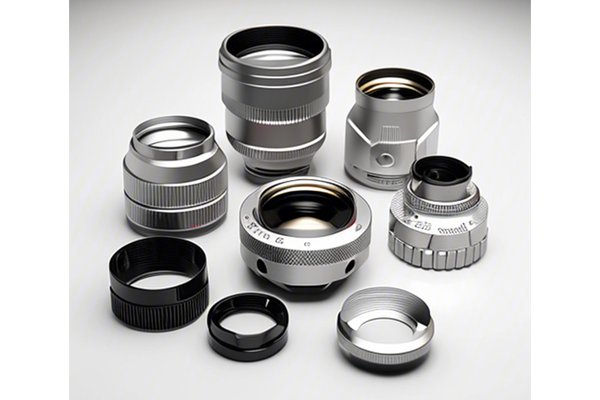In an era where precision and efficiency define engineering success and where automation and innovation are on the rise, Computer Numerical Control (CNC) machining stands as an unwavering pillar of modern manufacturing. As a leading authority in the CNC machining industry, YL Machining is committed to educating and empowering businesses through knowledge marketing on the vast capabilities and intricacies of CNC machining. This comprehensive guide dives deep into understanding CNC machining, explaining its types, applications, advantages, and how you can leverage its full potential in your operations.
—
Definition and Overview
CNC machining is a subtractive manufacturing process wherein pre-programmed computer software controls the movement of machinery and tools. The term “CNC” stands for Computer Numerical Control, which automates machine tools like lathes, mills, routers, and grinders, allowing them to perform tasks with astonishing precision. Unlike traditional machining methods that rely heavily on manual operations, CNC machining leverages technology to enhance productivity, efficiency, and overall quality.
Historical Evolution
The origins of CNC machining can be traced back to the 1950s when the U.S. Air Force first used numerical control technology to improve the manufacturing of aircraft components. Over the years, advancements in technology and the introduction of computer systems in the 1970s revolutionized the field. By the late 1980s, CNC machining had become more widely adopted across industries due to its efficiency and ability to produce complex components with high precision.
Key Components of CNC Machines
To better understand CNC machining, it’s essential to familiarize ourselves with the core components of CNC machines:
—
The flexibility of CNC technology allows for various machining processes. Here, we’ll explore some of the most commonly utilized methods:
CNC Milling
CNC milling utilizes a rotating cutting tool to remove material from a fixed workpiece. This method operates along multiple axes, allowing for the creation of intricate designs and complex geometries. CNC milling can produce a variety of shapes, ranging from simple pockets to complicated three-dimensional components.
CNC Turning
CNC turning machines utilize a single-point cutting tool to remove material while the workpiece is rotated. Primarily used for cylindrical parts, turning creates a wide range of components, including shafts, bushings, and fittings. This process can also include secondary operations such as threading and drilling.
CNC Drilling
CNC drilling focuses on creating holes in a workpiece. It is generally performed on materials using a rotating drill bit that removes material to form holes of varying sizes and depths. CNC drilling can be combined with milling to enhance the overall functionality of a component.
CNC Laser Cutting

CNC laser cutting is characterized by a focused laser beam that melts or vaporizes material, allowing for precise cuts and engravings. This method is commonly used on thin materials across various industries, thanks to its accuracy and efficiency.
CNC Electrical Discharge Machining (EDM)
EDM is a unique process where electrical discharges (sparks) are used to remove material from a workpiece. This method is particularly effective for complex geometries and hard materials, allowing for exceptional precision in areas traditional machining methods may struggle with.
3D Printing and Additive Manufacturing
While primarily an additive process, 3D printing is increasingly being integrated with CNC machining. This approach opens the door to rapid prototyping, allowing designers to quickly turn concepts into physical parts and iterate designs more efficiently.
—
CNC machining can accommodate a diverse range of materials, each presenting unique challenges and benefits:
Metals
Metals such as aluminum, steel, brass, and titanium are commonly machined due to their strength and durability. Each metal has distinct properties that influence its machinability, ranging from cutting speeds to tooling requirements.
Plastics
Plastics, including acrylics, polycarbonate, and nylon, are often utilized in CNC machining for their lightweight, versatile characteristics. CNC machining provides the ability to achieve high precision and smooth surfaces with plastic materials.
Composites
Composites, such as carbon fiber reinforced plastics, are increasingly used in industries requiring lightweight yet strong materials. CNC machining offers a way to process complex shapes while maintaining the integrity of the composite.
Ceramics
Although trickier to machine, ceramics are valued for their hardness and resistance to wear. CNC process adjustments, including specialized tooling and speed modifications, can yield desirable results.
—
CNC machining offers an array of benefits that set it apart from traditional manufacturing methods:
Precision and Accuracy
One of the standout features of CNC machining is its impressive precision. The automated nature of CNC technology significantly reduces the likelihood of human error, delivering parts that adhere to stringent tolerances as tight as +/
High Production Rates
As production demands escalate, CNC machines can operate continuously with little downtime, rapidly producing components. This efficiency translates to reduced lead times and improved turnaround times for clients.
Repeatability
The consistency of CNC machining processes ensures that once a part is programmed, it can be produced identically countless times. This repeatability is vital for mass production and assembling complex parts.
Scalability and Flexibility
CNC machining can adapt to fluctuating production needs seamlessly. Whether producing small batches or scaling up for mass production, CNC machines can be reprogrammed quickly without extensive retooling.
Automation and Reduction of Human Error
CNC machines can run autonomously, which minimizes human intervention. This automation not only enhances safety but also optimizes workflow, minimizing the chance of mistakes associated with manual handling.
—
CNC machining finds applications across a multitude of industries. Here are some prominent sectors making the most of this technology:
Aerospace Industry
CNC machining is vital for producing aerospace components, where precision and weight savings are crucial. It enables manufacturers to create everything from engine parts to complex housing, ensuring safety and performance.
Automotive Parts Manufacturing
The automotive industry relies heavily on CNC machining for critical components such as engine blocks, transmission parts, and custom fixtures. CNC technology facilitates streamlined processes, reducing production costs and increasing efficiency.
Medical Device Production
With stringent regulations and precise requirements, the medical industry leverages CNC machining to produce highly accurate components such as surgical instruments and prosthetics, ensuring reliability and safety.
Consumer Goods
In the consumer goods sector, CNC machining is employed to create various products, including home appliances, furniture, and electronic devices, allowing for intricate designs and customizations.
Electronics
The electronics industry benefits from CNC machining in creating enclosures, circuit boards, and other intricate components. The ability to work with small tolerances is essential for electronic devices’ functionality.
—
Programming is a crucial aspect of CNC machining, as it dictates the machine’s behavior. Here’s an overview of essential concepts:
to G-Code and M-Code
G-code (Geometric Code) is the primary programming language for CNC machines, dictating movements, tool paths, and various operations. M-code (Machining Code) controls auxiliary functions, such as starting and stopping the spindle, coolant flow, and tool changes.
Software Used in CNC Machining
Several software options are available for programming CNC machines, including CAD (Computer-Aided Design) and CAM (Computer-Aided Manufacturing) systems. These applications enable designers to create intricate models and generate toolpaths efficiently.
The Programming Process
The programming process begins with designing a part in CAD software, followed by creating a toolpath in CAM. The program is then converted into G-code or M-code, which is uploaded to the CNC machine for execution.
—
As technology continues to evolve, CNC machining is poised to benefit from several emerging trends:
Integration of Artificial Intelligence
AI is being integrated into CNC systems to improve machining efficiency, predictive maintenance, and even autonomous operation. By analyzing data in real-time, AI can optimize processes, reduce waste, and enhance overall productivity.
IoT and Smart Manufacturing
The Internet of Things (IoT) is transforming manufacturing through interconnected machines and data-driven decision-making. This integration allows for better monitoring, maintenance, and optimization of CNC machining processes.
Sustainable Practices in CNC Machining
The future of CNC machining will also involve sustainable practices, such as using eco-friendly materials, recycling scrap, and minimizing energy consumption during operations. Businesses are recognizing the importance of sustainability, creating a competitive edge while contributing to environmental preservation.
—
In a world of rapidly advancing technology, CNC machining stands as a testament to efficiency, precision, and innovation. By understanding the intricacies and advantages of CNC machining, businesses can harness this powerful manufacturing process to optimize their operations, respond to market needs, and stay ahead of the competition.
At YL Machining, we remain dedicated to empowering businesses through knowledge sharing and innovation in CNC machining practices. Join us on this journey of transformation, efficiency, and excellence, and let us help you unlock the future of manufacturing with CNC technology.
—



